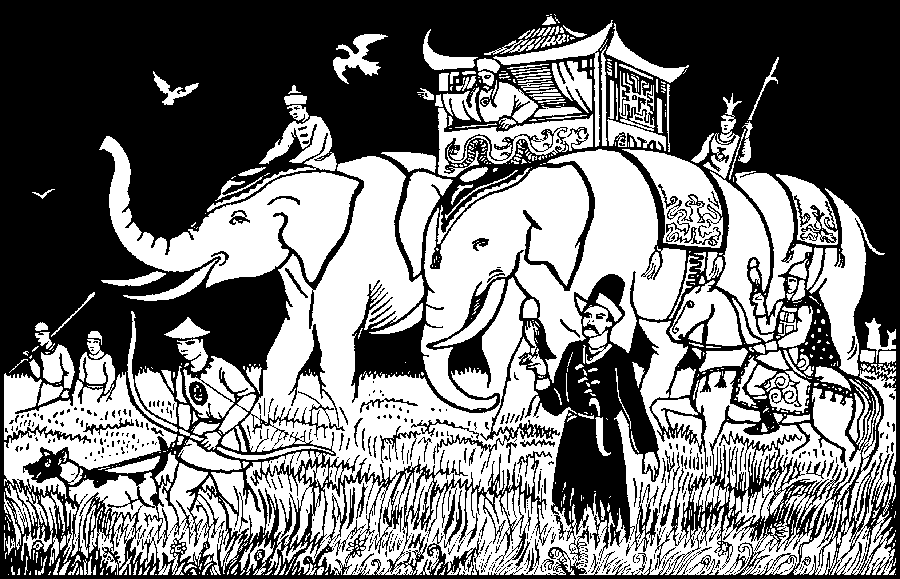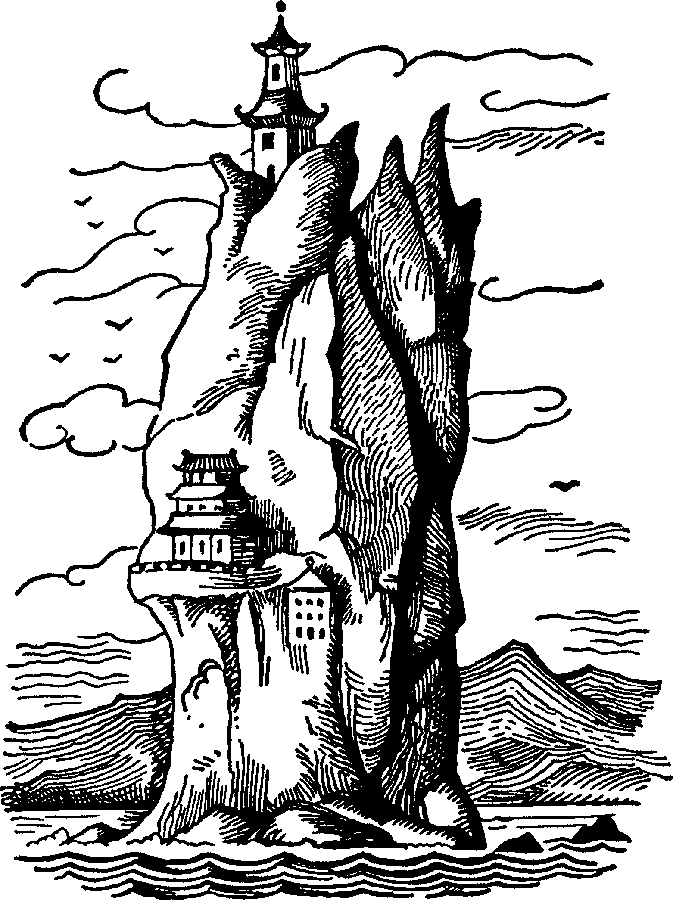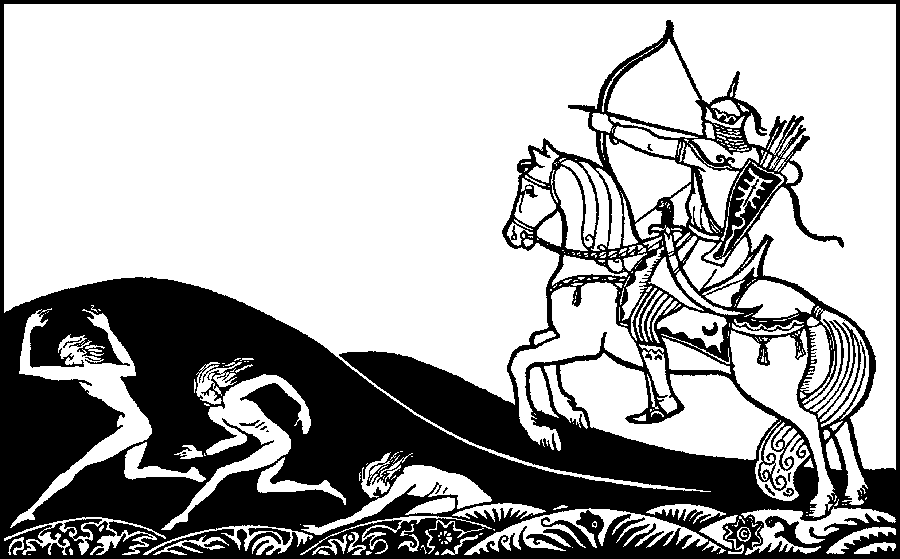
Keith Nellist
Part 2: Rules Variations
NATION TURN
1) Population Increase Phase
Each area in which a Nation has a unit has a chance of population increase. Some types of area to not give population increases for particular types of units as detailed under the Nation. Roll a D6 for each area that is eligible. On the roll of a 6 gain one population unit to be placed in the area, up to a maximum of the number of counters that a particular nation has. After the population increase roll, there may also be new units appearing according to the particular Round.2) Movement phase
Move any, all or none of a nation's units. All units may move up to 2 spaces. There are some restrictions based on terrain. Units must stop when they enter an area containing units from any other nation.Dominated units cannot move.
Overruns:
Units must normally stop when they enter an area containing units from other nations. However, if the moving Nation has more units than the area’s defender, they may overrun the area – leaving behind as many units as the defender has and moving the excess to the next area.3) Battles Phase 
When two nations occupy the same land area after the movement phase, battle occurs, unless those Nations can co-exist. One die is rolled for each unit simultaneously . For combined armies (cavalry and infantry) the attacker decides which dice result to allocate to which unit. This gives an advantage to mixed armies.
Battle Results
A normal unit eliminates another on 5+
Hills gives -1 to attacker die rolls in the first round.
Attacking cavalry has +2 on die rolls for the first round of battle.
Defending cavalry in open terrain is only eliminated on 6+ in the first round of battle.
Eliminated units are removed.
After the second round of battle a nation may submit to Domination if that is an option between the two units.
Battle continues until all units of one or both nations are eliminated, dominated or retreat. Nations that can coexist do not have to fight. The choice is up to the active player. They may attack a coexisting nation, although the attacked nation also rolls.
Units from dominated nations can attack dominant nations if they have entered the area from a non-dominated area. All dominated units are immediately eliminated in such a case.
Retreat
Either side may retreat after a battle roll if there is a suitable area to retreat into. For attacking nations, this is the area from which they entered the area. For defending nations this is any adjacent empty area or area containing a unit of the same nation. The units must normally be able to move into the area. They cannot retreat into Sea areas if they cannot move into Sea areas.The Defender moves to any adjacent solely occupied areas, or adjacent vacant areas that it could normally legally move to.
Attackers retreat to the area they moved from to reach the battle area.
Stacking limits apply to retreats.
If no legal retreat area is available, the units must remain in battle.
“Raiding" is defined as attacking for one round and then retreating. Certain nations (Leopard People, Turtle People, Night Bat people) are rewarded with Victory Points for raiding. A nation must state that it is raiding before dice are rolled. They may then retreat even if the enemy units are all eliminated.
4) Overpopulation Phase
Each area can support a limited number of units. Extras units are removed from the board in this phase.| Area Type | Units |
|---|---|
| Plains | 4 |
| Cursed area | 1 |
| Mountains | 2 |
| Hills | 3 |
| Islands | 3 |
| Sea | 3 |
| Rice | 5 |
Special Turns
Invasion!: During an invasion! Turn the invader has two movement and two battle phases (i.e. phases are 1,2,3,2,3,4).AREAS
Note that the geography of the region is changed during the game so that lands are sunk, mountains raised, and islands flooded.There are several terrain types and features:
Sea most units cannot move into these areas.
- Zabdamar – live in the sea and gain population increases for occupying sea area.
- Dragon people and Undead: When controlled by the War Dragon the can be moved into sea areas and can stop in them – they are in large barges. They do not gain population increases for living on the sea.
- Pentans can enter sea areas but die in the overpopulation phase.
- Elephant people (These are actually “Elephant Seal" people), Seal people, Immanent Masters: Can live in the sea but do not get population increases for sea areas. Elephant people can only live in sea above the snow line.
 Islands are sea but with many islands, so that a substantial land based population can survive here but sea and most land based units can also move through these areas.
Islands are sea but with many islands, so that a substantial land based population can survive here but sea and most land based units can also move through these areas.
- Praxians and Ignorants cannot move through these areas.
- Pentans can enter sea areas but die in the overpopulation phase.
- 3 units can be supported in Islands.
Plains are flat country and the default terrain.
- 4 units can normally be supported in plains.
Hills are difficult terrain but not mountainous. Most land based units can live here.
- 3 units can be supported in hills.
The Tunnelled Hills and Fanzai begin as hills.
Mountains are so steep and high that they are difficult to live in and difficult to move through.
- Only the following can live and move in mountains,: Yak, Tiger, Eagle, Sheep, Leopard, Sekeverans, Undead, Dozaki, Wind children.
- Other units cannot enter them except via mountain passes.
- 2 units can be supported in mountains.
Dozaki Newhome, the Mountain of Dark and the Mountain of Light begin the game as Mountains.
Mountain passes are routes through the mountains that enable units to move from one side of a mountain area to another. A unit can enter a mountain space as if it is a normal hilly area via a mountain pass route. If the mountain is occupied the unit must stop as per normal, and the units would battle as per normal, however the active unit can be retreated along a mountain pass in any direction along the pass. Example: A unit of Praxians from the badlands enters a mountain area inhabited by Tiger people. They stop, and fight the mandatory first round of battle. The Praxians could then choose to “retreat" forwards into the hills of Kralorela.
Note that the area at the end of the pass must also be empty. Also note that mountain passes can be overrun as normal.
Sea routes are narrow channels through land that work in a similar way to mountain passes allowing sea based units to cross land into other sea areas.
Snow line. Areas above the snow line receive regular snowfall and frosts, and are not suitable for some Nations. Pig People, Praxians, Night Bat People, and Bamboo Elves may not enter Snow Line areas.
Pent, Hsa Shan, Kuchawn, Shiyang and Kahar are north of the Snowline.
Cursed lands. Sekever, an evil god, curses the lands west of the mountains to be infertile and unsuitable for farming.
- 1 unit can be supported in cursed lands.
Rice farmland: Once Rice farming is invented it can be used to support a larger population. Rice farming is practiced in plain areas adjacent to the Suam Chow, and in the Suam Chow itself. It is also supported in Teshnos and Gnow Chang Hia.
- 5 units can be supported in Rice farmland
Coastal areas: any area adjacent to sea or islands.
Hsunchen Coexistence
Hsunchen units from different nations can cohabit in the same area. They do not need to fight. When a Hsunchen unit moves into an area occupied by other Hsunchen they can declare that they are not fighting. They still receive a population increase roll as normal for the area that they inhabit and still score for it in a scoring round.If the area is attacked by another unit, both Hsunchen units roll simultaneously in defence. The attacker can choose which unit to eliminate. Both Hsunchen units can choose to retreat.
Overpopulation is calculated using all of the units in an area. Normal areas have a maximum of 3 units per area. If there are 4 units then one is eliminated by overpopulation. If one of the nations is more populous than the others then it loses a unit. If it is equal, then the nation whose turn it is loses the unit.
Dominance

Some units can dominate other units in the same area. This is similar to Hsunchen coexistence but with one nation at an advantage. When the potentially dominant nation moves into an area with a potentially dominated populace it must declare that it is trying to dominate the populace and simply survive the first and 2nd round of battle. This gives the attacked nation one chance to flee. Example: The Sekeverans could dominate Immanent Masters dominating dragon people, all in the same area.
- Dozaki, Dragon people, and the Army of Every Death can dominate Ignorants
- Immanent Masters can dominate Dragon people, Sekeverans and Undead.
- The Army of Every Death can dominate Hsunchen and Undead.
- Sekeverans can dominate all other units.
- Bamboo elves can dominate Hsunchen
- Tree elves can dominate Hsunchen and Teshnans.
- Pentans can dominate Teshnans, Boshan, and Hsunchen.
War Dragon
When the War Dragon is active the dragon people (Shiyang, Boshan, Hum Chang, Vaska Long), Undead, Army of Every Death and Immanent Masters are all mobilised to fight for the empire.During the player turn of each of these nations, the player also controls units of the other nations in the War Dragon, with certain limitations:
- They cannot move all of the units from an area leaving it empty. They must leave at least one of the nations in possession of the area.
- They may move through other War Dragon areas but may not stop in those areas unless they can rule those areas.
- During combat, the player whose nations turn it is controls the units under the control of the War Dragon.
- The War Dragon can move land based units into the open sea and leave them there. They can remain there (on barges) but if they move inland they cannot later move back to the sea unless they are again controlled by a War Dragon.
- They cannot be used to fight nations that are part of the War Dragon.
TURN ORDER
Player 4: Zabdamar Appear in Round 4Player 4: Seal people
Player 1: Elephant people
Player 1: Teshnans Appear in Round 4
Player 2: Pig people
Player 2: Boshan Appear in Round 2
Player 2: Tiger people
Player 3: Sheep people
Player 3: Hum Chang Appear in Round 2
Player 3: Deer people
Player 1: Woodpecker people
Player 1: Shiyang Appear in Round 2
Player 1: Yak people
Player 4: Jungle Hen people
Player 4: Vaska Long Appear in Round 2
Player 3: Ignorants Appear in Round 2
Player 3: Sekeverans Appear in Round 4
Player 1: Undead Appear in Round 4
Player 4: Dozaki Appear in Round 3
Player 3: Night Bat people
Player 4: Day Bat people
Player 3: Eagle people
Player 2: Leopard people
Player 2: Turtle people
Player 1: Tree elves Appear in Round 13
Player 3: Bamboo elves Appear in Round 13
Player 4: Wind Children Appear in Round 7
Player 2: Pentans Appear in Round 12
Player 4: Praxians Appear in Round 12
Player 2: Chestelo Appear in Round 13
Player 2: Immanent Masters Appear in Round 14
Player 1: Army of Every Death Appear in Round 14





